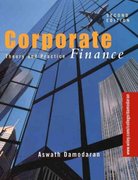Submit a process flow chart (provide necessary parameters and details).
Submit a screen shot of the Arena model.
Below is the format of reporting simulation results on TIS, for each one of the given
rework %, 5, 6, 7, 8, 9 & 10%, for both Avg. TIS and Max TIS.
4-7 A proposed production system consists of five serial automatic workstations. The processing times at each workstation are constant: 11, 10, 11, 11, and 12 (all times given in this problem are in minutes). The part interarrival times are UNIF(13, 15). There is an unlimited buffer in front of all workstations, and we will assume that all transfer times are negligible or zero. The unique aspect of this system is that at Workstations 2 through 5 there is a chance that the part will need to be reprocessed by the workstation that precedes it. For example, after completion at Workstation 2, the part can be sent back to the queue in front of Workstation 1. The probability of revisiting a workstation is independent in that the same part could be sent back many times with no change in the probability. At present, it is estimated that this probability, the same for all four workstations, will be between 5% and 10%. Develop the simulation model and make six runs of 10,000 minutes each for probabilities of 5, 6, 7, 8, 9, and 10%. Using the results, construct a plot of the average cycle time (system time) against the probability of a revisit. Also include the maximum cycle time for each run on your plot. Avg cycle time (TIS) 5% 6% 7% 8% 9% 10% Rework 4-7 A proposed production system consists of five serial automatic workstations. The processing times at each workstation are constant: 11, 10, 11, 11, and 12 (all times given in this problem are in minutes). The part interarrival times are UNIF(13, 15). There is an unlimited buffer in front of all workstations, and we will assume that all transfer times are negligible or zero. The unique aspect of this system is that at Workstations 2 through 5 there is a chance that the part will need to be reprocessed by the workstation that precedes it. For example, after completion at Workstation 2, the part can be sent back to the queue in front of Workstation 1. The probability of revisiting a workstation is independent in that the same part could be sent back many times with no change in the probability. At present, it is estimated that this probability, the same for all four workstations, will be between 5% and 10%. Develop the simulation model and make six runs of 10,000 minutes each for probabilities of 5, 6, 7, 8, 9, and 10%. Using the results, construct a plot of the average cycle time (system time) against the probability of a revisit. Also include the maximum cycle time for each run on your plot. Avg cycle time (TIS) 5% 6% 7% 8% 9% 10% Rework








